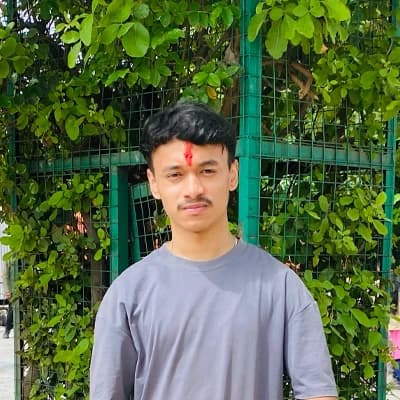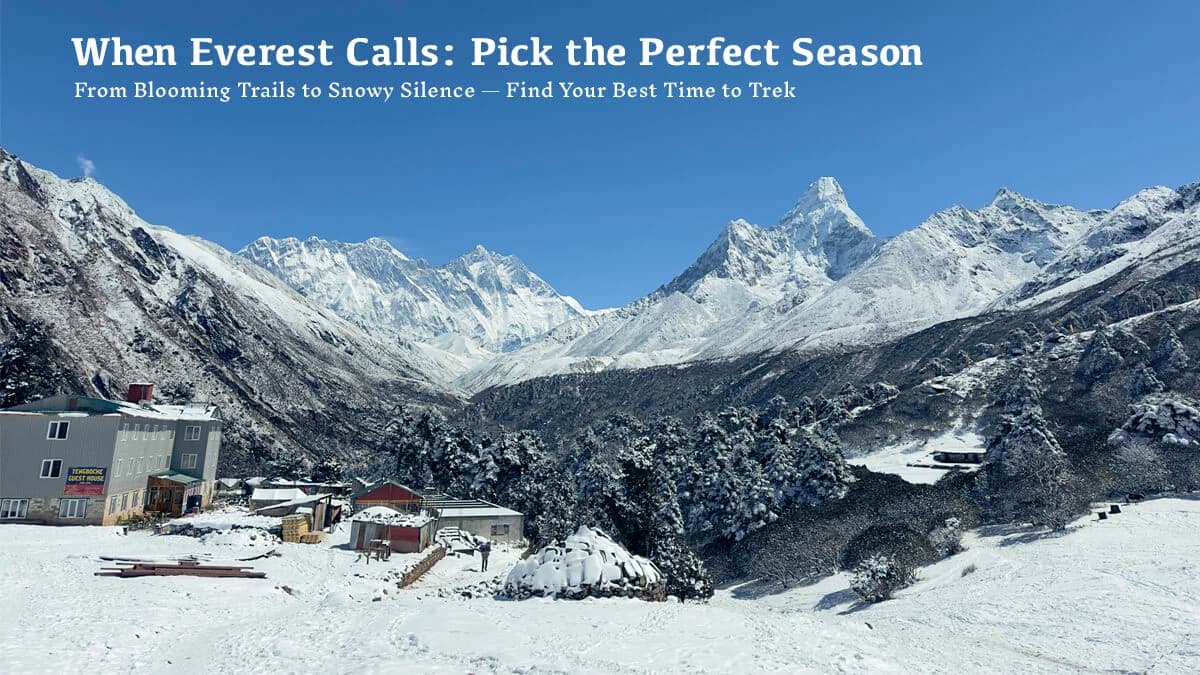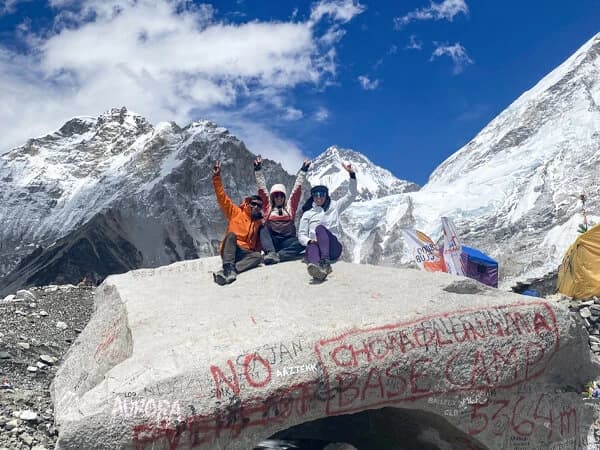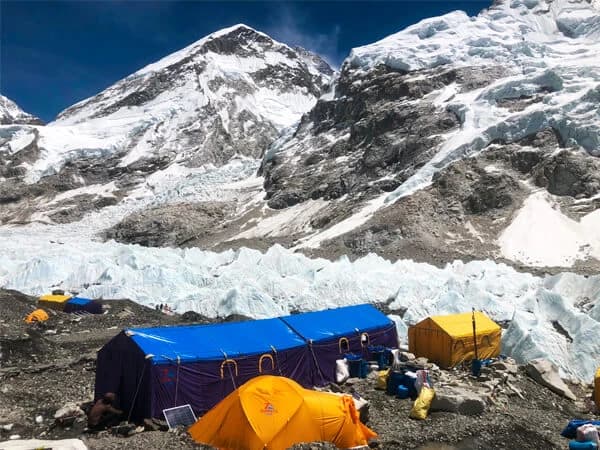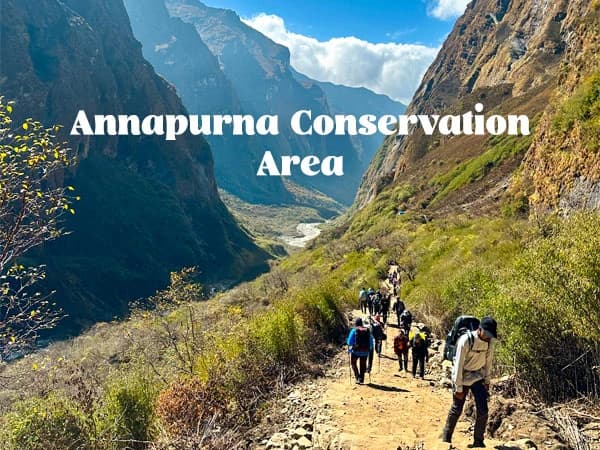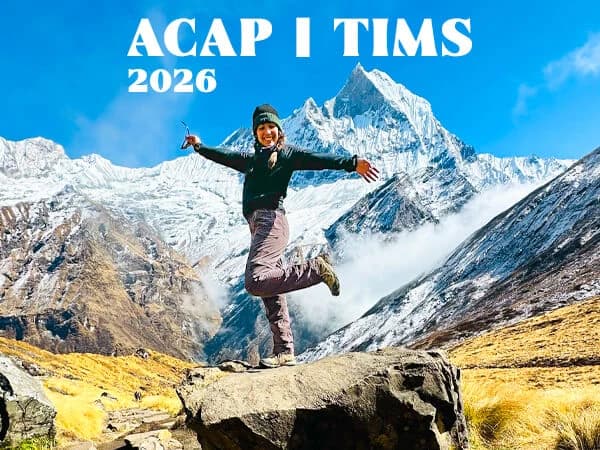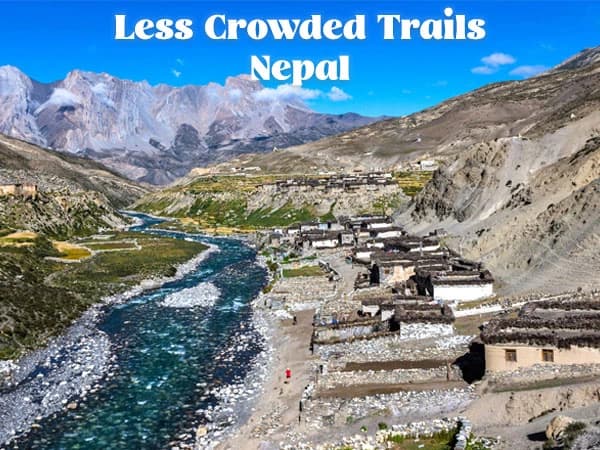Not all months are made equal on the trail to Everest. Discover the perfect season for clear skies, fewer crowds, and a trek worth every step.
Best Time for Everest Base Camp Trek
Spring (March to May) is a Season of Magic for a Hike to Everest Base Camp. Why?
Spring renews itself in the Everest area. Coming out of cold, still winter, color explodes along the trail. Pink, red, white rhododendrons march row on row up hillside after hillside. The weather is breezy yet neither hot nor chilly. There's a chorus of birdsongs out of pine groves. Dawn is early. Days grow long. And blue skies—a virtual certainty—all day long. Deep blue.
March is subdued but still winter's grasp. You may crunch along bits of snow on the route up to Namche. It is a beautiful sight otherwise. In April, the trekkers adorn the trail with vibrant colors. Teahouses are busier again. Weather clear and ideal. It cools off in evenings, but nothing that a decent hot sleeping bag cannot handle. Everest is most attractive in April mornings—no mist to it with hard blue skies.
Even in May it is mystical. The forests stay lush. The trails stay temperate. But from latter half of May it fogs up, more so below. It soon gets hot with monsoon clouds massing by end of month.
I still recall one spring morning in Tengboche. It was early. It was cold, our breathing foggy. The sun then came up behind the peak and cast a golden light on Everest. We simply stood there—wordless, awed. That is spring in the Khumbu.
Spring is best for most trekkers. Particularly if you're a novice to high altitude. If it's just a one-time thing for you, that's your season. For gear and planning recommendations see our Everest Base Camp Trek for Beginners webpage.
Crowds average—less crowded than in fall. Teahouses open. Porters and guides become more easily booked.

Why Trek in Spring?
- Blossoming rhododendron forests
- Mild weather. Pleasant walks.
- Good moutain clarity (particularly March–April)
- Rainbow trails with lots of wildlife
Best Months: Mid-March to early May
Late May is subject to haze, especially in valleys. If you're looking for clear skies and flowers, visit in April. Stuck between dates? You might want to try our Annapurna Base Camp Trek in the spring.
Why Do Trekkers Describe Autumn as the Ideal Season for Everest Base Camp?
Autumn is the big production for Everest. It rained all summer. Months. The mountains are clear and crisp. The monsoon has scrubbed off dirt and debris. It all looks freshly sparkling, spotless, and super clear. This is when Everest looks most itself. You see all of its face lines.
That's when it starts. The rain fades. The trail hardens. And valleys become green again. It's quieter than for busier months, a personal favorite for most hikers. October is go-for-it-all month. When it's hums along that trail—teahouses crowded with people, active chatter, and bracing air that makes ascending a piece of cake. Sun-baked days and mountains that appear to twinkle under a blue sky.
We ascended up to Namche one October morning after sunrise. Light was streaming between pine trrees with yellow hue. Ama Dablam was floating in background. It was a end-less-looking sky. There was a scent of ground with firewood. It still makes shudders to my backbone.
October is festival month for Nepal. Dashain and Tihar are festivals that locals celebrate. If you plan early enough, you get to see villages illuminated with music, laughter, and colored festivities. It is a wonderful cultural exposure that enriches our trek that much more.
But it has a drawback. It's popular—extremely popular. There're crowded tea houses. Get a table early. It'll be a bit expensive. But it'll be worth it for that view, for people, for that vibe.
If you're a solo traveller who desires a social trek without being absolutely alone now's a good time to do so. It's also a good time for that ultimate shot. See our Complete Guide to Everest Base Camp Trek and our Everest Base Camp Trek for Solo Travellers for additional comparisons and recommendations.
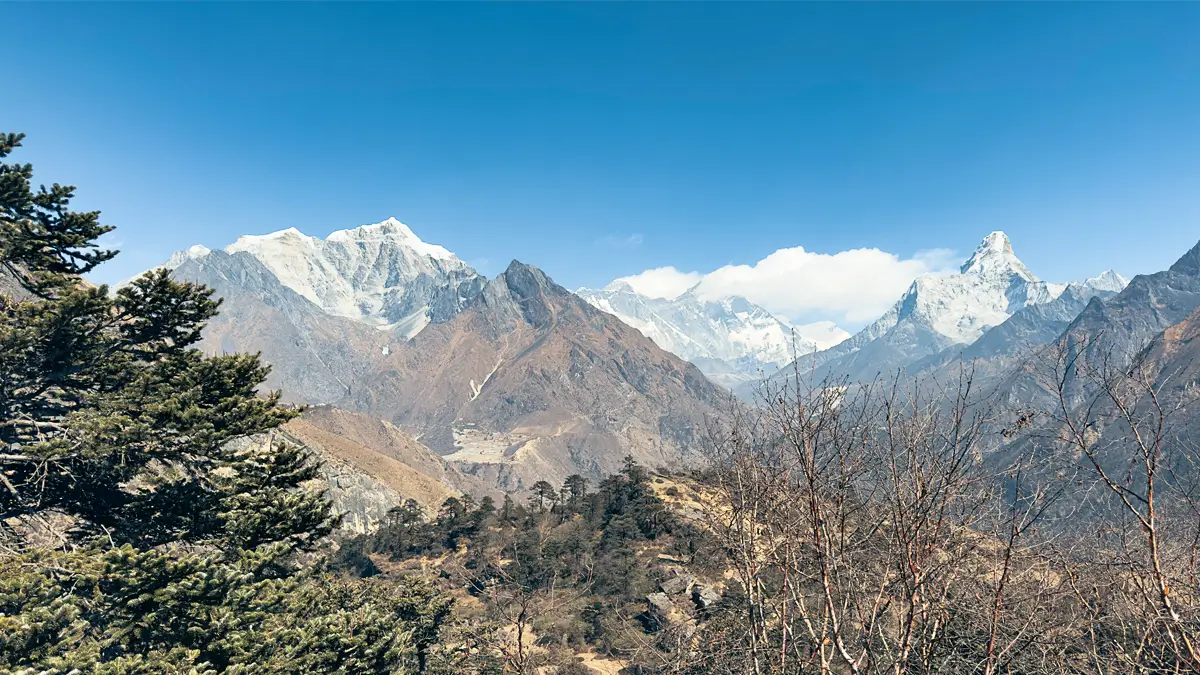
Highlights of Autumn:
- Maximum exposure of peaks
- dry and stable conditions
- Colours trekking scene
- Respected cultural festivals way along
Best Months: Mid-September to late November
Seeking less crowded trails in autumn? Head out early Sept or late November. You'll be off-season with unsullied vistas. Consider our Everest Base Camp Trek – 14 Days for autumn dates.
What To Expect When Hiking To Everest Base Camp In Winter (December-February)?
Winter is cold, still, and crisp. The mountains become more prominent. The sky is nearer. The trail is serene. There aren't many trekkers up here anyway, so you might walk for a long time in silence.
There is a layer of snow on pass. It is possible to visit tea houses but less. It gets cold while sleeping—at least minus 15° in Gorakshep. Days stay clear, though. Sun is in your back. Bring the right gear. Thermal layers, down coat, insulated boots are a must.
But the payoff? Trackless trails. An uncrowded sunrise on Everest. And that profound silence that you cannot achieve in more popular months.

Pros:
- Clear skies
- Less crowded
- Spectacular winter scene
Cons:
- Extreme cold
- Risk for delay in snowfall
- Some lodges may close
If you're a winter trekker, be prepared. A good sleeping bag and a down jacket with multiple layers are must-haves. It provides nice day hiking with sun out rather than shadows that freeze up quick.
Best Time: Early December or late February for a more temperate climate.
To see more recommendations, see our Everest Base Camp Trek Difficulty Explained to be prepared for winter conditions.
Best for: Peace seekers, experienced trekkers, photographers. Looking for a packing list for this season? Get our super popular Everest Base Camp Trek Packing List.
Is It Monsoon Season (Mid-June to Mid-September) That Is Bad for EBC Trek?
Yes. The Truth be told—monsoon isn't ideal. But it isn't impossible. It rains nearly everyday, primarily in low altitudes. Trails become muddy. Lukla flights tend to be canceled.
But if you're a thrill-a-minute kind of person, then there's hidden beauty in this season. Ferned forests. Valley mist. Waterfalls in full flow. It rains a lot in the region, and flowers are blossoming and birds are singing.
It rains less up here over Namche. The clouds part for a minute. And with fewer trekkers, you might be alone in a teahouse.
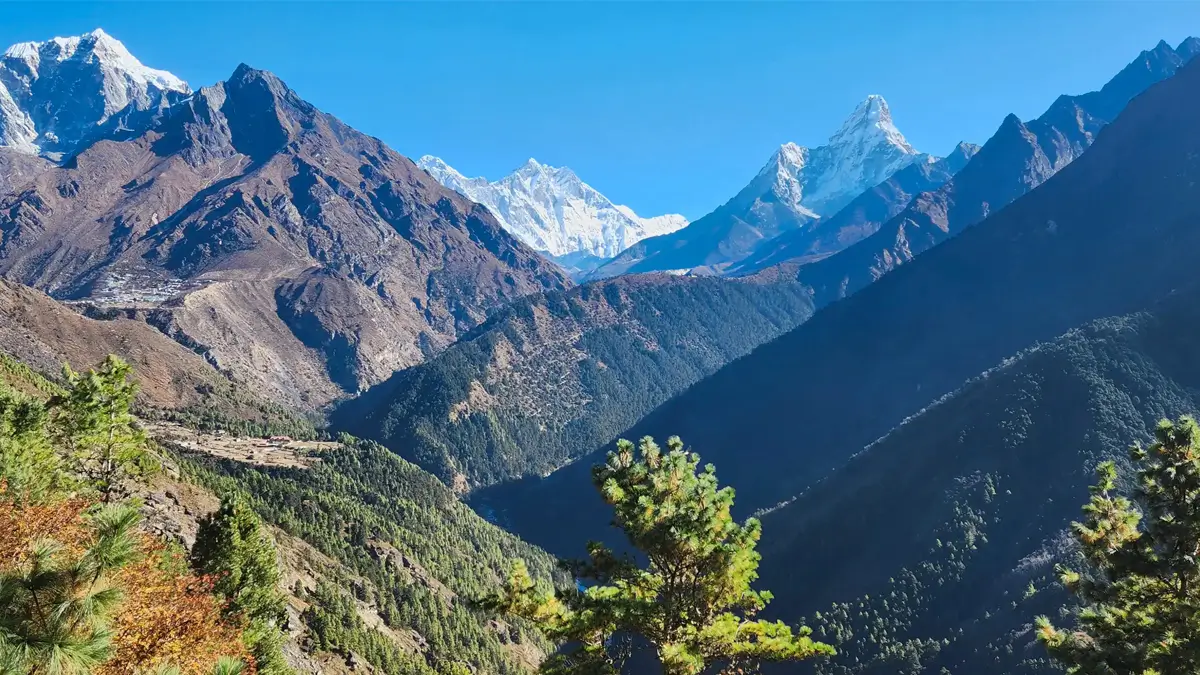
Pros
- Scenic landscape
- Fewer trekkers
- Season-off rates
Cons
- Day rain, particularly afternoon
- Poor trail conditions.
- Flight cancellations
But if you're adventurous, monsoon season is a possibility. Do be warned about soggy boots and unexpected delays.
Trekking Tips for Monsoon:
- You ought to include a raincoat and a waterproof bag.
- Begin early with one's hike (sparser skies).
- Provide salt or Dettol for treating leeches.
- Allow additional buffer days for flight cancellations.
Best Time: Early or late June for a more pleasant weather time period. Try that with other seasons from our How Hard is Everest Base Camp Trek Compared to Others? article.
Do not mind getting messy while preferring solitude? The monsoon might be a nice treat for you. Prefer more serene trails? Our Pikey Peak Trek – 9 Days would be a good option for you.
Season Comparison Table – In a Nutshell
Here is a brief glimpse of what is available each season:
| Season | Weather | Crowds | Scenery | Flight Risk | Best For |
|---|---|---|---|---|---|
| Spring | Mild & clear | Medium | Flowers, bright skies | Low | First-timers, nature lovers |
| Autumn | Cool & dry | High | Crisp views, festivals | Low | Social trekkers, photographers |
| Winter | Cold & dry | Low | Snowy peaks, quiet | Medium | Experienced, solitude seekers |
| Monsoon | Wet & cloudy | Very low | Green forests, waterfalls | High | Off-beat explorers |
Other than a short trip planning. Do you need personalized recommendations? Our experts from Shikhar Adventure would be delighted to assist!
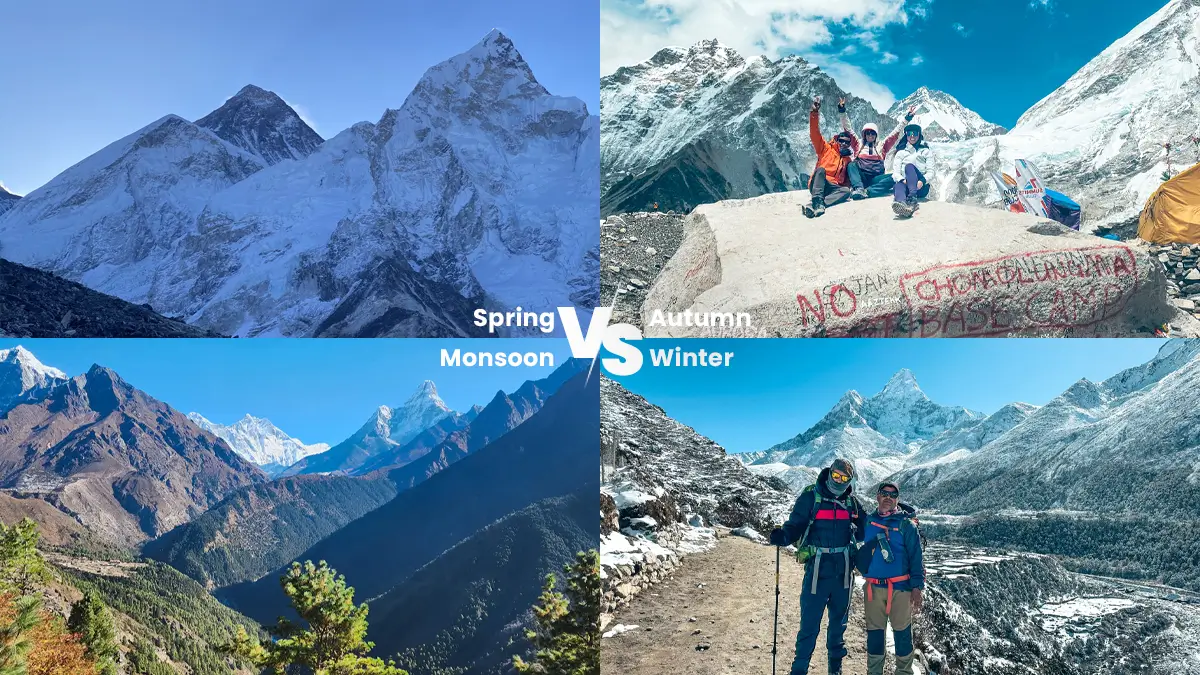
When to Go Precisely? Month-by-Month Break
Pick a month carefully. This is how they rank:
- January-February: Chilly, least busier. Ideal clarity if you don't mind it being snowy.
- March – April: Mellowing out gradually. Rhododendrons flower. Perfect for photogs and novice trekkers
- May: Fair weather. Haze begin. But still good for higher ground.
- June-August: Humid with showers. Green surroundings. Flight cancellations occur frequently.
- September: Rain decreasing. Green environment. Fewer trekked
- October: High season. Best weather. Prebook early.
- November: Cool. Sceneries still beautiful. Lesser tourists than October.
- December: winter starts. Serene and clear skies.
Pro Tip: Ideal flights for Lukla would be early October or early April mornings.
Monthly Breakdown of EBC Weather and Trail Conditions
To assist with decision-making for yourself, a month-by-month concise forecast of what to expect is set out below.
| Month | Weather | Crowd Level | Trail Condition | Best For |
|---|---|---|---|---|
| January | Cold, dry | Very low | Snowy, quiet | Hardcore trekkers |
| February | Cold, clear | Low | Dry, crisp | Winter lovers |
| March | Cool, bright | Moderate | Flowering, scenic | Nature fans |
| April | Warm, colorful | Busy | Best forest views | Everyone |
| May | Warmer, hazy | Moderate | Clear mornings | Late spring adventurers |
| June | Hot, wet | Low | Slippery, humid | Off-season trekkers |
| July | Wettest month | Very low | Poor visibility | Risk-takers |
| August | Rainy, lush | Very low | Muddy, leechy | Bold explorers |
| September | Drying, fresh | Rising | Clearer skies | Great season opener |
| October | Dry, perfect | High | Best mountain views | First-timers |
| November | Cold nights | Busy | Crystal clear skies | Photographers |
| December | Cold, dry | Low | Snow starts falling | Solitude seekers |
October is safest if you're a beginner trekker. Flowers? Give April a shot. Snow? Then it's February for you. To further prepare, also check out our Complete Guide to Everest Base Camp Trek.
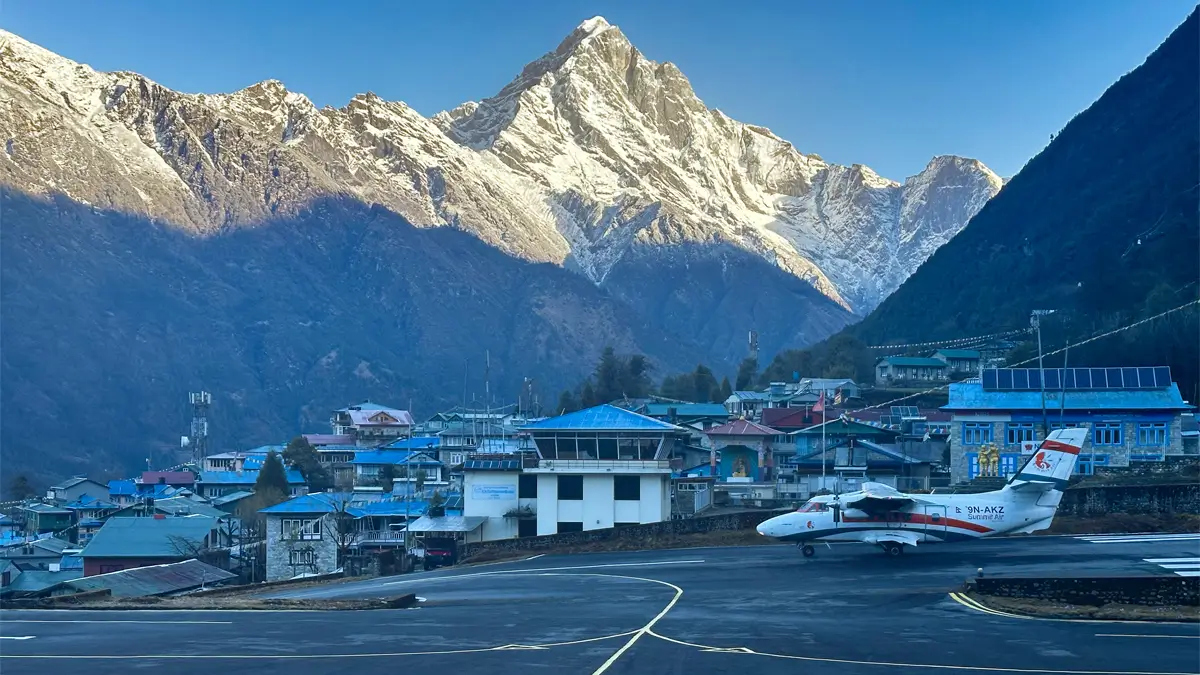
How Do Flight Conditions Impact Lukla Flights?
Getting a flight into Lukla is one of the most important parts of planning your Everest trip. It's the way to get to Everest Base Camp. But weather conditions often make planes late.
The best times to change flights are in the fall and spring. Clear skies and light winds make it easy for planes to land on Lukla's short strip. Mornings tend to be most comfortable.
Summer monsoon and winter months also see flight delay. Planes are usually grounded for hours or even days while clouds, rain, and snow dominate. This produces stress changes.
Tips for Lukla Flights:
- Book morning flights to avoid afternoon weather changes
- Give some buffer days in your calendar for delay
- Travel light to make takeoff and landing less stressful
How does Season impact Teahouse Openness and Comfort?
Teahouses along the trail vary by season. In tourist season—autumn and spring—open even if crowded. It is a good idea to reserve early as rooms run out early.
Lodges in elevated sites shut down or offer minimal service in winter. Hot showers might be a luxury. A good sleeping bag and heavy gear will be a must.
There are fewer trekkers in monsoon. A couple of teahouses close or close early. That said, it makes more room for those who do. What to Expect by Season:

| Season | Teahouse Availability | Heating | Price | Comfort Level |
|---|---|---|---|---|
| Spring | Fully open | Yes | Medium | Comfortable |
| Autumn | Fully open | Yes | High | Very comfortable |
| Winter | Limited in high areas | Limited | Low | Basic, cold |
| Monsoon | Reduced | Limited | Low | Variable, sometimes wet |
Learn more about lodging in teahouses with our Everest Base Camp Trek Cost Guide.
How Does Season Affect Trek Difficulty Level and Health?
Season does matter for trail health. Winter evenings make frostbite and exposure to altitude more likely. But it does make it difficult to breathe with cold air due to the dryness.
Spring season and fall provide the most even-keel. It is temperate weather. Standard risk for risk with altitude sickness includes rest time and fluids.
As a result of monsoon weather, paths become muddy and slippy. That equates to more potential for slipping and getting injured. Wet weather also saps energy from you more quickly.

Health Tips by Season:
- Drink enough water in a year
- Wear layers during winter months
- Utilize trekking poles under wet/muddy weather conditions
- Leave rest days to acclimatize particularly if it is spring/autumn season.
To acclimatize for beginners, visit our Everest Base Camp Trek for Beginners page.
How does Season affect Photography Scenic Highlights?
Your exposures will rely greatly on when you're out for a hike. Autumn will be ideal for flattering conditions for capturing clear, scenic portraits of mountains. Mornings and evenings provide soft, golden lighting.
Spring is a kaleidoscope of color—the flowering woods and rhododendrons provide a rousing multicolored background. Clouds occasionally pass in behind peaks for a dramatic effect.
Winter covers the landscape in white with its snow. The clear sky allows you to capture tight clear images of Everest's icefalls and glaciers. But because lighting is short, there isn't much time to shoot.
The monsoon is atmospheric and mysterious. It provides misty-morning shots with moody atmosphere along with lush vegetative shots while it provides less-clear shots of mountains.
Photography Tips by Season:
- Autumn: Sunrise from Kala Patthar
- Spring: Forestry trails and flowers around Namche
- Winter: Serene villages and white-sloped mountainsides
- Monsoon: Waterfalls and Misty forests
Additional trekking photography advice? Read Shikhar's guide on how hard the Everest Base Camp Trek is.
How does Season Impact Packing for Trekking Gear?
Your equipment is seasonal. In fall and spring, warmth layers suffices. It may be a pleasant day, but it cools off in the evenings. A good down jacket, a layering fleece, and a water resistant layer are essentials.
Winter demands heavy-duty gear. A heavy-duty sleeping bag with a –20°C option will be needed as will insulated boots. A decent hat and gloves will also be necessary. Hand warmers are a lifeline.
Waterproof equipment is required for monsoon. Packing rain covers for boots and pack. Fast-drying equipment together with a decent umbrella assist. Phone case waterproofing with a couple of dry bags for papers protect papers and electronics.
Packing Tips by Season:
- Spring/Autumn: Bring layered clothing, sun
- Winter: Get additional warmth with battery packs
- Monsoon: Bring rain gear, ziplock bags, and trekking poles
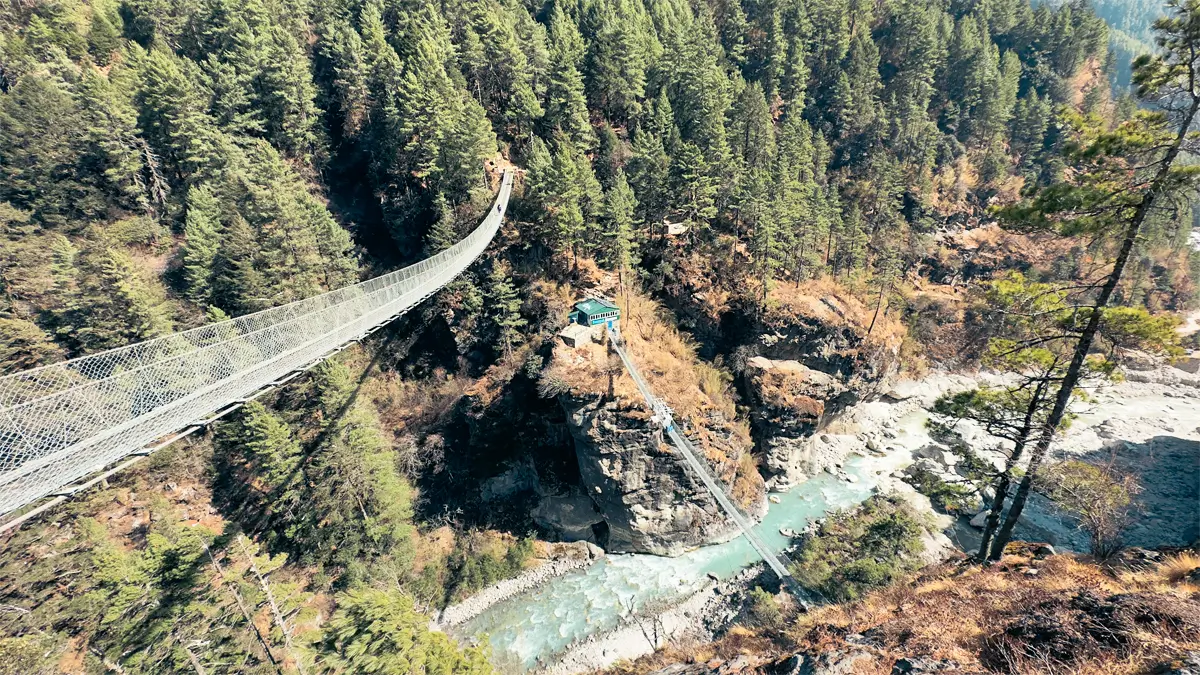
How Season Influences Party Size for Trekking as for Social Interaction?
The seasons also season your social trek life. Big groups love autumn. Trails bustle with action and conversation. You will be meeting trekkers from everywhere. It's best if you don't mind socially.
Spring is not crowded. You get the good things about being with other people and having time to yourself. Comfortable and cozy teahouses and communal tales make for a good hike.
Low season for visitors. It's muted along trails. It is good for solitude seekers or experienced photogs. Yet services decline.
Room trails become ghostly bare. It is room and silence season for adventurers with a foreknowledge that some solitude will be forecasted.
Social Life by Season:
- Autumn: Busy, crowded, festive
- Spring: Balanced, social but tranquil
- Winter: Isolated, Solo, Private
- Monsoon: Solo, serene, un Season choice translates to season choice of trekking ground.
Certain Frequently Asked Questions Regarding EBC Trek Seasons
Looking for the best time to visit Everest Base Camp so as to avoid crowds and enjoy nice weather? Get these quick answers for smart planning.
-
When is it best for a trek to Everest Base Camp?
Spring (Early March-May) and fall (late September-November) months are ideal. You will be rewarded with good weather, dry trails, and beautiful mountain scenery.
-
Do I need a winter trek to Everest Base Camp?
Yes, you hike from December to February, it will be cold weather, snowy trails and limited access for tea houses.
-
Everest Base Camp trek in monsoon? Yes. It is possible.
Yes, but between June to early September is avoided due to heavy rainfalls it induces, soggy trails, flight cancellations, and poor visibility.
-
Which month is least crowded while trekking along EBC trail?
Early December to late February see off-season with small crowds with limited trekkers with good weather for seasoned trekkers.
-
How does weather impact the trek?
Weather influences visibility, safety, trail condition, and flight time. A suitable season selection allows for a safer hike with a more scenic trip.

Conclusion: When to Visit Everest Base Camp for the greatest Experience
Your entire trip is based upon the season you consider for the Himalayan base camp trek. Spring and autumn are most preferred by tourists due to clear skies, pleasant weather, and crowded trails. Winter is suitable for tourists who prefer solitude and white landscape views, while monsoon is suitable for adventurous tourists.
Each time you travel, it will be a challenging yet rewarding trip to get to Everest. Select a season depending on what you're looking for. And don't forget, planning and preparing is extremely necessary.
Ready for a holiday? Get in touch with our experienced guides from Shikhar Adventure to organize the ultimate trek for you. Your Everest trek awaits!


